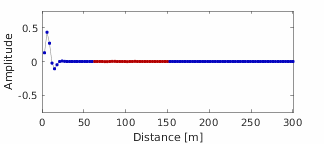Fast Transmission Line Simulation with Graphical Models Repository

Summary
Transmission lines are the backbone of modern electronic systems—from printed circuit boards to power grids—but simulating how electrical signals move through complex, multi-segment transmission lines is notoriously time-consuming.
This CodeOcean capsule offers a fast and scalable algorithm for simulating transient signals in multi-segment transmission lines using an algebraic graphical model—a breakthrough that reduces computation time while maintaining high fidelity.
Developed by Dr. Joel B. Harley and colleagues, this algorithm transforms transmission line networks into structured graphs, enabling efficient, large-scale simulations of voltage and current behavior across branched or cascaded line systems.
⚙️ The Problem: Simulation Bottlenecks in T-Line Analysis
Standard techniques for transmission line simulation—like the Finite Difference Time Domain (FDTD) method or the Telegrapher’s equations—can become computationally expensive when:
- Simulating many segments or branches,
- Including lossy or dispersive materials,
- Capturing high-frequency, short-pulse transients.
For engineers designing high-speed electronics or diagnosing electromagnetic interference, speed and precision are both critical.
🧠 The Solution: An Algebraic Graphical Model
The proposed method models a multi-segment transmission line network as a graph, where:
- Nodes represent voltage or current states,
- Edges model the physics of transmission, including delay, impedance, and reflection.
This framework uses algebraic signal flow graphs to propagate voltage and current through the system without iterating over small time steps, making simulations significantly faster.
Mathematically, for a two-port segment:
![]()
where:
 : Forward and backward traveling voltage waves,
: Forward and backward traveling voltage waves, : Transmission matrix capturing delay and impedance effects.
: Transmission matrix capturing delay and impedance effects.
By connecting these blocks graphically, the entire network becomes a sparse linear algebra problem, solved using efficient matrix factorization.
🚀 Key Benefits
- ⚡ 100x faster than traditional FDTD simulations in large systems
- 🧮 Handles branched and cascaded segments with ease
- 🔁 Includes reflections, impedance mismatches, and delays
- 🛠️ Easily integrates with SPICE and hardware design tools
📦 What’s Inside the Capsule?
- ✅ MATLAB implementation of the graphical model algorithm
- 🔄 Tools to build and simulate complex multi-segment transmission line networks
- 📉 Example simulations: pulse propagation, reflection analysis, impedance mismatch
- 📘 Code documentation and example use cases
💡 Real-World Applications
- High-speed circuit design and verification
- Signal integrity analysis for PCBs and interconnects
- Lightning strike modeling in aerospace systems
- Rapid design iteration for RF engineers
📚 Reference
Harley, J. B., Saleh, M. U., Kingston, S., Scarpulla, M. A., & Furse, C. (2019). Fast Transient Simulations for Multi-Segment Transmission Lines with a Graphical Model. Progress In Electromagnetics Research, Vol. 165, 67–82.
🔗 https://www.jpier.org/PIER/pier.php?paper=19042105
This CodeOcean capsule puts powerful transmission line simulation tools into your hands—with the speed of algebra and the clarity of graphs. Whether you’re a student, a hardware designer, or a researcher, this toolkit gives you everything you need to model high-speed signal behavior across complex electrical networks.
Simulate smarter. Design faster.
electromagnetics graph theory Nondestructive Testing reflectometry simulation transmission line

